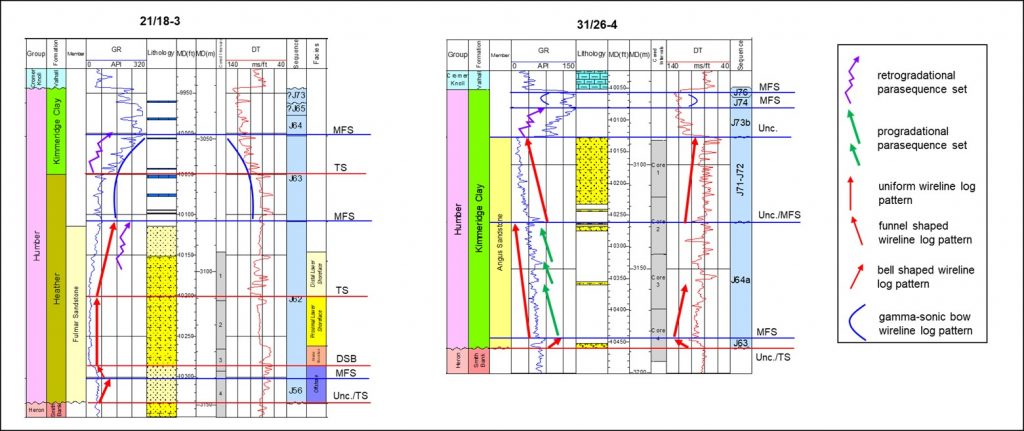You may not be aware that our Stratigrapher, Dr Phil Copestake, was one of the original authors of a paper defining the J sequence stratigraphic scheme that has now become a standard followed by many companies in the North Sea Basin. The scheme was originally developed in BP in the late 1980s – early 1990s and published in three seminal papers (references below). Phil (together with co-author Dr Mark Partington) has recently been working on updates to the scheme taking into account the much improved well and seismic database that now exists for this region, together with the results of numerous sequence stratigraphic projects since undertaken by the author for many of Merlin’s consulting clients.
This new publication, which is to be published as a memoir of the Geological Society of London, will contain full descriptions of all 38 sequences spanning the whole of the Jurassic to earliest Cretaceous interval, illustrated by numerous figures including 85 reference wells and 17 seismic lines. In addition the full biozonation scheme, presented only in summary form in one of the 1993 papers, will be described in the new publication. This effort has been generously supported by several operating companies who have allowed the inclusion of their proprietary interpretations and data into the publication.
Ahead of the publication, which is expected to be available in 2022, Phil has been providing free online presentations of the updated sequence stratigraphic scheme to interested companies. These have been well received so far and Merlin is happy to invite other companies to take up this offer. If you are interested in this, please contact us or visit our website to find out more about Merlin’s services.
In addition, Phil will be presenting key aspects of the new scheme at the upcoming FORCE webinar, to be held on 26th-28th October, entitled “Multiproxy biostratigraphy: Recent and future advances in the application and technologies”.
The following figure shows an example of the sequence development in two North Sea wells. The wireline logs provide characteristic signatures which can be attributed to recognised depositional sequences, parasequences and key intra sequence surfaces. These wells show two well known shallow marine sandstones. On the left in the 21/18-3 well is the Fulmar Sandstone Member, the hydrocarbon reservoir in fields including Kittiwake (as in this example), Fulmar and Clyde. Well 31/26-4 on the right shows the development of the younger Angus Sandstone Member, the reservoir in several fields in the Angus Embayment, such as the Angus Field.

Papers published defining the J sequences, mentioned above, are:
Mitchener, B. C., Lawrence, D. A., Partington, M. A. & Bowman, M. B. J. 1992. Brent Group: Sequence stratigraphy & regional implications. Structure, Sedimentology, Paleontology, Diagenesis, Hydrocarbons & Production Geology: Brent Sandstones, North Sea, Special Publication no. 61, 45 – 80. Geological Society of London.
Partington, M. A., Mitchener, B. C., Milton, N. J. & Fraser, A. J. 1993. A genetic stratigraphic sequence stratigraphy for the North Sea Late Jurassic & Early Cretaceous: Stratigraphic Distribution & Prediction of Kimmeridgian – Late Ryazanian Reservoirs in the Viking Graben & Adjacent Areas. In: Parker, J. R. (Ed) Proceedings of the 4th Conference on Petroleum Geology of N. W. Europe. Geological Society Publishing House, Bath, 347-370.
Partington, M. A, Copestake, P., Mitchener, B. C. & Underhill, J. R. 1993. biostratigraphic calibration of genetic stratigraphic sequences in the Jurassic of the North Sea & adjacent areas. In: Parker, J. R. (ed) Proceedings of the 4th Conference on Petroleum Geology of N. W. Europe. Geological Society Publishing House, Bath, 371-386



